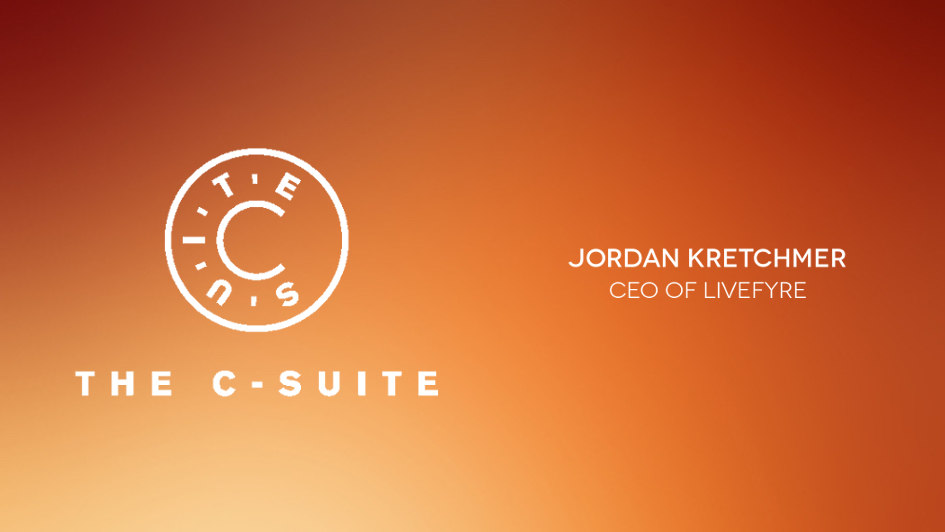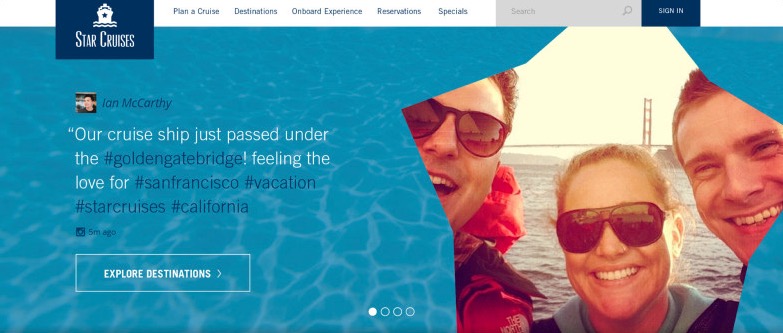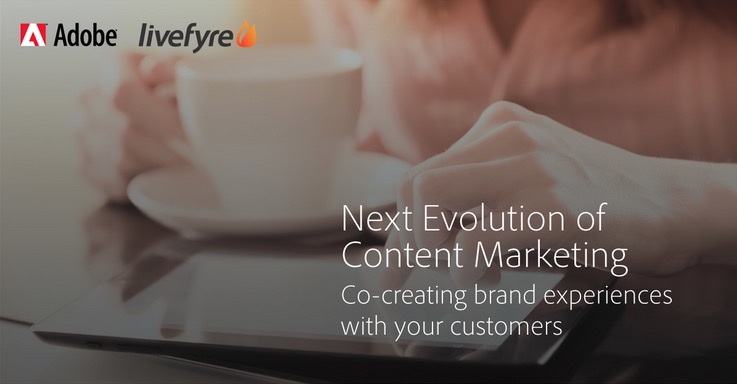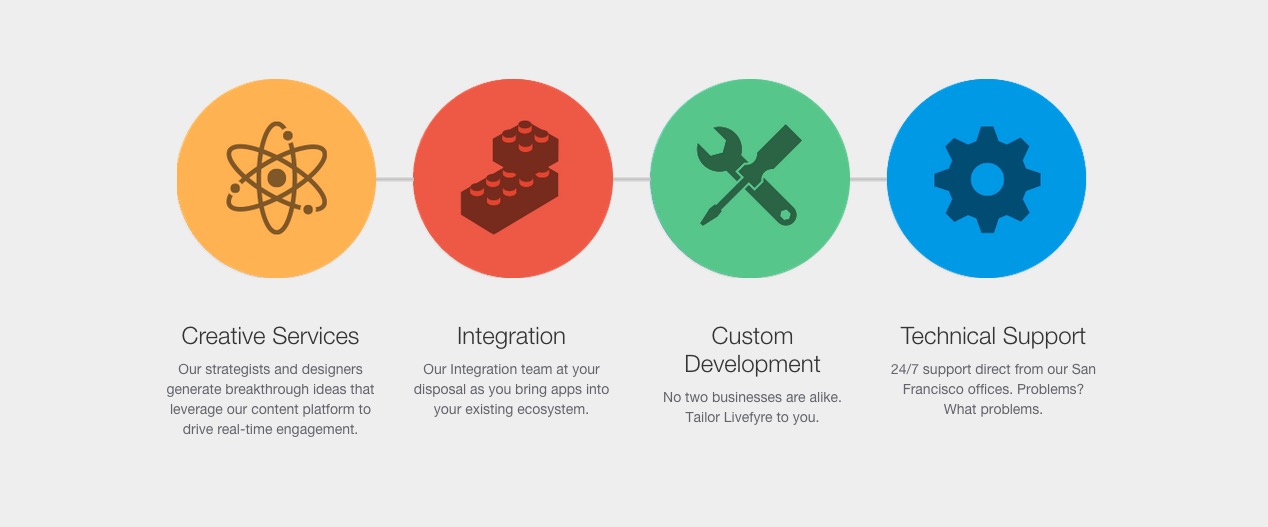
 In this month’s edition of The C-Suite, we highlight Jordan Kretchmer, the Founder and CEO of Livefyre, a real-time content marketing and engagement platform used by media companies and brands worldwide to create more engaging campaigns for their consumers. Through a combination of real-time content, conversation, and social curation, Livefyre’s studio harnesses the power of user-generated content in a laudable way. Kretchmer founded the San Francisco-based startup in December 2009, and has overseen its growth to 160 employees and over $67M in venture financing.
In this month’s edition of The C-Suite, we highlight Jordan Kretchmer, the Founder and CEO of Livefyre, a real-time content marketing and engagement platform used by media companies and brands worldwide to create more engaging campaigns for their consumers. Through a combination of real-time content, conversation, and social curation, Livefyre’s studio harnesses the power of user-generated content in a laudable way. Kretchmer founded the San Francisco-based startup in December 2009, and has overseen its growth to 160 employees and over $67M in venture financing.
Here he shares with us his past moments of turbulence, vision for the future, and recommendations for success.
Brandingmag: What do you see as the biggest challenge facing brands today?
Jordan Kretchmer: Brands in general, if you go back 5 years ago, were disrupted in a big way by social networks taking a huge share of the attention that they used to be able to get very easily. So share of attention, share of voice, in the mindset of a consumer is now one of the hardest things to achieve. I think brands have (since 5 years ago) been struggling [with] how to do that and Facebook specifically (and then Twitter) kind of latched on, [offering] them a way to get in front of their audience in a way that felt native to where the audience was.
But over the last two, three years, Facebook especially has been changing the rules of engagement and making it so [that] brands can’t just participate in that dialogue, they have to pay to play. It’s kind of left everybody struggling to figure out how to regain control of the audience that once was very accessible to them in a world where not only is it not guaranteed they can get in front of them, but now they have to pay to get in front of them in places they used to be able to access very organically.
So that’s one of the biggest struggles facing brands today, and most of them are going back in time to solve it. They’re going back to the way they did it before the days of external social media networks in order to figure out how they can regain access to those audiences.
BM: I always think Facebook is a moving target for a lot of brands. It’s definitely turned into a pay-to-play system..
JK: Yeah, what it means is that brands have gone [in a very short amount of time] from being in total control of [their destinies] — control of the plan and the strategy that they put forth to get the audience involved — to having to be extremely reactive and responsive. A strategy that worked six months ago may not work again today because the rules have changed and brands are left out of control of the situation. It’s a very interesting and tumultuous time.
RELATED: The C-Suite: David Chen, CEO of Strikingly
BM: That’s a nice segue into real-time content marketing and engagement, which you guys are providing and sort of telling brands to engage in real-time content, conversation, and social curation. What does that really mean for the laymen?
JK: What is basically means is…[that] the world moves way faster than it ever has. There is content out there being created on a second-by-second basis and, in order for brands to stay relevant, they have to be able to access that content and utilize it in order to get their audience engaged. Real-time marketing is about a brand being able to be responsive to what’s happening in the world around them as it’s happening.
If you think about the old school form of messaging that you sent or branding that used to happen, you had six months to develop the marketing message and five more months to develop the website around it. Six months to develop the TV spot and, once it’s out there and done, it’s done — it never changes. And in the case of digital, websites, and mobile apps, without WiFi your brands are left without a tool to update content and be reactive in real time to what’s happening in the world and with their audience. That’s what our platform enables — that real-time adjustment. As the audience changes, as news around it changes, [brands] can be very responsive and reactive to that [by] using our platform.

BM: Comments are usually relegated to the bottom of the page. Sidenotes has changed that, so what went through what you did with Sidenotes?
JK: Sidenotes started here at Livefyre as a special project where we wanted to take a new look at how people interacted with the content that they were reading. We messed around with a lot of different formats and we ended up with this idea in annotation. If you think about social moments where I want to interact or engage with something, they tend to be smaller moments in time or smaller pieces of content.
The reason why comments in their old school form have taken kind of a bad rap is because people are trying to — in the case of a news article let’s say — leave a comment that is usually about a specific part of the article, right? The next person who leaves a comment maybe comments on a different part of the article and the end result is a bunch of sort of mismatched and disjointed pieces of content posted by the audience within this context.
So, the idea was: How do we bring more context throughout the page and allow people to interact with smaller pieces of content right where it inspires them to leave their thoughts? That’s the great idea where Sidenotes came from.
BM: Recently, I saw that you guys are a natively integrated service in Adobe. What makes Livefyre unique?
JK: Other social media services, if they want to create a plug-in and place it through the standard Adobe process, they can do that. The difference in integration is that Adobe engineers themselves actually built Livefyre into the core of their platform, so it’s not just a plug-in on the side. We have access to core features within the Adobe Experience Manager, for example, that enable an Adobe Experience Manager customer to manage Livefyre’s platform [fully] within Adobe Experience Manager, so it truly is a native integration.
We are the only UGC platform to be natively integrated into Adobe and into Salesforce. You can think of it as lighting up all of Adobe’s features within the marketing cloud with UGC content; so, if you’re creating an email campaign, you can drag and drop social media content into your email campaign. If you’re creating a website or microsite experience for the campaign you’re running, you can add a map into it by dragging, dropping, and then setting the predefined content that you want running into it.

BM: Let’s switch gears a little bit. Could you walk me through some of the challenges that you had in getting Livefyre funded, and also in getting traction?
JK: Wow, that I can spend a few hours talking about, but let me see if I can kind of summarize. Starting a business back in the day when I set out to do this, you see all these companies that are getting funded. You read on TechCrunch that so-and-so got funded and you think that’s a really stupid idea. If that thing got funded, certainly my amazing idea will get funded. The one rule of thumb is it’s going to take 10 to 20 times longer than you think it will, almost every single time. When you look at how you feel about your product that you’re building, nobody externally sees the vision that you do. You’re the only one that sees it, so you have to convince investors that they should spend their million dollars on you and not on somebody else’s position. And it can be a very demoralizing process to be told “no” fifty times before you’re told “yes.”
The other thing is for me specifically: I went $20,000 in debt. I was living off credit cards. I was paying people to develop code for me using my own personal bank account, and I was living personally off of my credit cards because I needed to be able to continue building products — and I needed to also buy sandwiches to stay well nourished (peanut butter and jelly, specifically). But it took nine months to close funding. I thought it was going to take six weeks. I mean I had enough money to last me six weeks and I ended up stretching somehow my available funds and my credit to go nine months. Had it not worked, I was screwed. There’s no way I was going to come out from under what I had dug myself into if we weren’t able to get funded.
The investors who ended up investing are investors who had said “no” to the original concept. The one thing I learned is that you got to listen to the market. There is some level of sticking to your vision, right? But how you go about executing that vision is super important. You can accomplish the same vision, but execute it in a way that resonates more with investors (where they believe more in your ability to execute successfully). And so I found a way to alter the execution without really changing the vision that much and the new execution was essentially what Livefyre is today — building applications that our customers can integrate into their site instead of what it was originally — a destination site where people would come to interact with each other.
So, I flipped it around and that resonated. All of a sudden, investors who had said “no” said “yes” and saved me right before homelessness.
I always say starting a company is not for the faint of heart and it’s not for sane people. You have to be delusional, you have to be insane. You got to not believe anything anybody tells you, right? Even the people who are supporting you, don’t listen to them. You got to just go with your gut, listen to yourself. Make smart decisions. Make quick decisions. And you have to just be a little crazy. There’s no sane person ever who has started a company and been successful.
SEE ALSO: Content for Today and Tomorrow: Theme-Driven vs. Campaign-Driven
BM: How can customers drive the conversation and community around content? How are you guys accomplishing your mission today? Are there any new, exciting things that you guys are doing to help drive it?
JK: In just a few [days], we’re launching a brand new platform that I can’t talk about publicly yet. We have a big launch event on November 3rd…in New York.
We have 8 customers getting up to talk about why the launch is so important to them and their future in their ability to build their brands and marketing successfully. It is a platform that rethinks the value of user generated content and presents user generated content as a first party citizen — as sort of a primary citizen in the world of a marketer’s environment. There are a lot of things, but I can’t get into too much detail…

BM: The perfect segue is the political debate that just happened and I see that the comment system extensively uses Livefyre, is that correct?
JK: Our platform is used by Fox News, CNN — all of the major news networks reporting and capturing the voices of what’s being said live during the debate. During the CNN coverage, there were over 500,000 pieces of content created that we captured and were presented back on CNN.com during the last debate. We have a lot of activity around politics because so many of our customers are media news organizations.
BM: That’s fantastic. What advice could you offer brands to enrich their content? What different strategies do you have?
JK: The number one thing I would say is when you integrate user-generated content with professionally-created content you get to tell your story alongside all of your best fans. Numerous studies have been done to prove that engagement on-site goes up, e-commerce conversions go up, brand affinity goes up, and trust scores go up, as well. Every study that’s ever been done about the effects of UGC on an audience show that integrating the fan’s voice with your message is the best way to engage them and build brand loyalty.
BM: You see Livefyre as providing that solution for brands?
JK: Oh, absolutely. We are the largest provider in the space. In their latest report on the social media space, Forrester named us a leader in the Social Depth category, which is all about building a brand audience and community, and building content engagement on your own site. This is a result of how many customers we have, the robustness and depth of our platform, the amount of features we have around content filtering, moderation, and quality control.
BM: How do you think Millennials are changing the conversation around this?
JK: Millennials are not necessarily changing the conversation, they’re just changing where the conversation happens. You look at the kind of interactions that Millennials are having now and they’re going back to the idea of closed connectivity. Closer friend circles — not sharing as much in mass, but sharing more closely with people they trust. They want closer connections with the people they’re interacting with on social media. They don’t want one too mass, like one-to-me posting to 5,000 people to see it. I think they understand [that] there is a time and place for each kind of communication.
It’s happening with Snapchat, for example, and even companies like Snapchat are starting to figure out ways to open up specific pieces of those [closed] conversations and turn them into public stories.To a lot of Millennials, there is the opportunity to publish more openly, but a core piece of [Snapchat’s] platform is private conversations and sharing more closely with private friends.
I think that’s the trend most brands now are trying to figure out: How do we integrate ourselves into those messages? Those platforms are making it hard for brands to get involved. So we’re entering into a new phase of social media, which almost goes back in time a little bit, to more private messaging than public posting. I think we’re going to start to see a lot of really interesting strategies get deployed. Livefyre is already working on and picking out ways that we can help brands integrate into that.

RELATED: Several Brands Are Defining the Rules for Courting the New Generation
BM: My last question is what’s next in relation to the space you lead?
JK: I do think what we’re starting to see is brands trying to take back control over their audience. I think you’re going to start to see brands investing a lot more in how they are able to get in front of their audience without getting to pay. A lot of brands got addicted to the free and organic distribution they were getting with Facebook and Twitter and what they’re definitely going to want more of — we hear this from brands everyday — is “How do we get access again to the audience without having to pay every single time we want to put a message in front of them?”
I think you’re going to start to see a lot of brands putting a lot of attention back on things like email lists. How do we get people to register, so that we can communicate with them? You’re going to start to see a lot brands who want to be able to push [notifications] to a consumer when there’s something relevant to them: a piece of content or a new campaign that they’re running. You’re going to start to see a lot of direct consumer communication where [brands are] going to be looking to cut out the middle man from how they reach an audience.
The C-Suite is an ongoing series featuring C-level executives from innovative and intriguing companies worldwide. Stay tuned for each month’s edition as we make our way through the top.